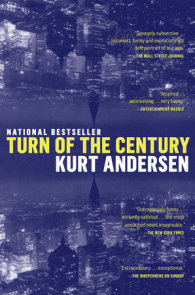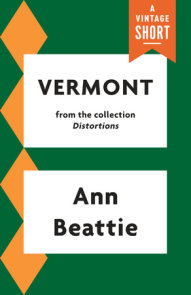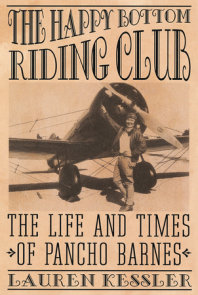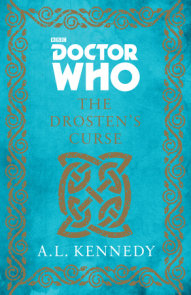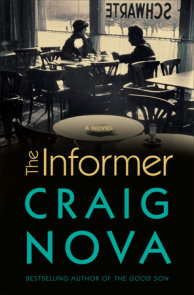READERS GUIDE
“Every page is studded with precise and succulent detail. . . . A cozy, kick-off-your-shoes-and-curl-up novel.” —The New York Times Book ReviewThe introduction, discussion questions, and suggestions for further reading that follow are designed to enhance your discussion of the characters, themes, and setting Patricia Volk brings so vividly to life in her novel, To My Dearest Friends.
Introduction
The story of two women brought together when a mutual friend dies and leaves them with a puzzle to solve, To My Dearest Friends is a warm and witty exploration of female friendships, long-term marriage, and the surprises that pop up in even the closest of relationships.When Roberta Bloom dies of breast cancer in her early sixties, her two dearest friends, Alice Vogel and Nanny Wunderlich, are given the key to her safe-deposit box. Inside the box, they find a steamy, undated love letter. Alice, Roberta’s lifelong friend, is the owner of a fashionable Madison Avenue resale boutique. Nanny, who met Roberta in graduate school, is a former therapist and now works as a real estate agent on Manhattan’s tony Upper East Side. Roberta’s “posthumous surprise” evokes very different reactions in them. Nanny, sure that their friend had good reasons for entrusting them with the letter, insists on trying to track down Roberta’s mysterious lover. The reserved, discreet Alice thinks Roberta’s adulterous affair should remain a secret, but agrees to help Nanny sort out whatever clues Nanny uncovers.
Narrated in the alternating voices of Nanny and Alice, To My Dearest Friends explores the responsibility of unwanted information and captures the spirit of women looking back on a lifetime of love and losses while turning their eyes on the possibilities the future holds.
Questions and Topics for Discussion
1. How do the initial portraits of Alice [pp. 5–8] and Nanny [pp. 9–11] set the tone of the novel? What particular details quickly establish each character’s personality? What makes their narrative voices distinct? In what ways is the dual perspective appropriate to the story?
2. Why does Volk present Dale’s letter to Roberta twice, first interspersing Alice’s thoughts and interpretations and then Nanny’s [pp. 25–35]? Why is this literary device so effective?
3. Do Nanny’s and Alice’s attitudes and observations reflect feelings common to many women of their age or do the specific circumstances of their lives set them apart? To what extent is Nanny a “typical” widow? Do her descriptions of her life and emotions [p. 17, p. 71] ring true? How would Alice define her job as proprietor of Luba, her “preowned boutique”? Why, despite her gentle mockery of her clients [p. 37, for example], is the shop important to her?
4. What does the conversation Nanny and Alice have after meeting with Roberta’s lawyers show about the way women talk about friendships [p.18–21]? How does Volk capture the rivalries and insecurities that often color even the closest, most trusting relationships? Are women more likely to feel—or express—these complicated emotions than men are? Do you think that the way boys and girls are raised has an impact on the kinds of relationships they form and the assumptions they make about their friends? In what ways are Alice and Nanny’s reactions to one another reminiscent of the behavior of girls and of women younger and presumably less mature than they are?
5. Alice and Nanny discuss the consequences of having “information you wish you didn’t have” [p. 55]. What beliefs or personal qualities underlie the different positions they take? Whose point of view do you identify with and why? What obligations, if any, does Roberta’s message—“You know what to do” [p. 96]—place on them?
6. Discuss the portrait of Roberta as it unfolds through Alice’s and Nanny’s reminiscences. Is it a clear and consistent picture or are they influenced by the role she played in their lives and by their own needs? Did Roberta present herself differently to each of them, and if so, why? Is her choice of two such different friends unusual? Do Nanny’s descriptions of her various friendships echo your own experience [p. 183]?
7. Alice quotes Yeats several times throughout the novel [pp. 5, 61, 88, 111, 166]. What is the significance of her interest in and admiration for the poet? Do the individual quotations offer insights into the themes of the novel?
8. What part does Nanny’s training as a therapist play in her decision to seek out Roberta’s lover? To what extent is she driven by an emotional commitment that remains strong even after her friend’s death?
9. Is the Pennebaker theory—“Self-disclosure boosts the immune system. It reduces shame and guilt” [p. 52]—a valid and helpful guide to behavior? Are there situations in which self-disclosure is more harmful than beneficial? Discuss the possible reasons Alice and Nanny give for Roberta’s behavior and motives [p. 53]. Given what you know about Roberta, which theories are the most plausible? What else might explain her decision to let her friends deal with her secret?
10. How would you characterize the marriages described in the book? Which marriage is the strongest? What part do the husbands play in the choices the women make? What do their marriages reveal about the three women’s views of themselves and their roles as wives and mothers?
11. Is Alice completely honest with herself about her fling with Mr. Wald [p. 77]? In what ways does her affair parallel Roberta’s taking a lover and how is it different? To what extent are their decisions based on dissatisfaction with their marriage and/or sexual lives?
12. What kind of mothers are Nanny and Alice? How does her relationship with Flora deepen your understanding of Nanny? Compare Alice’s seemingly off-hand thoughts about her son and the impending birth of her grandchild [p. 7] and her reaction to the baby’s arrival [p. 169]. In what ways have the discoveries she’s made about Roberta account for the changes in Alice’s views of both marriage and motherhood?
13. Flora describes Roberta as “manic” and “manipulative” [p. 97]. What adjectives might Nanny use to describe the same behavior? Are children often able to see things about adults and adult relationships that their parents are either unable or unwilling to admit? To what extent are the criticisms children—including grown children—express about their parents’ lives based on their limited knowledge of the way the world works? Does age and experience temper our opinions and make us more forgiving?
14. A discussion about the difference between “privacy” and “secrets” arises during the dinner at Jack’s house [p. 107]. How would you define each? Do both words imply exercising a sense of right and wrong or do you agree with Alice that “something private has no moral implications”? Is the avoidance of hurting other people a basic moral principle? Are Alice’s affair with Mr. Wald and Roberta’s affair with Dale morally justifiable?
15. Were you surprised to discover the identity of Roberta’s lover? Did it make a difference to your feelings about Roberta or about the novel as a whole?
16. Volk turns New York City, the setting of To My Dearest Friends, into a character in its own right. Which scenes best convey the excitement and pleasures of living in New York? The downside of life in the city? How does Volk use humor or exaggeration to create vivid and memorable impressions of the city and of New Yorkers? Do you think the culture and situations she describes are unique to New York?










